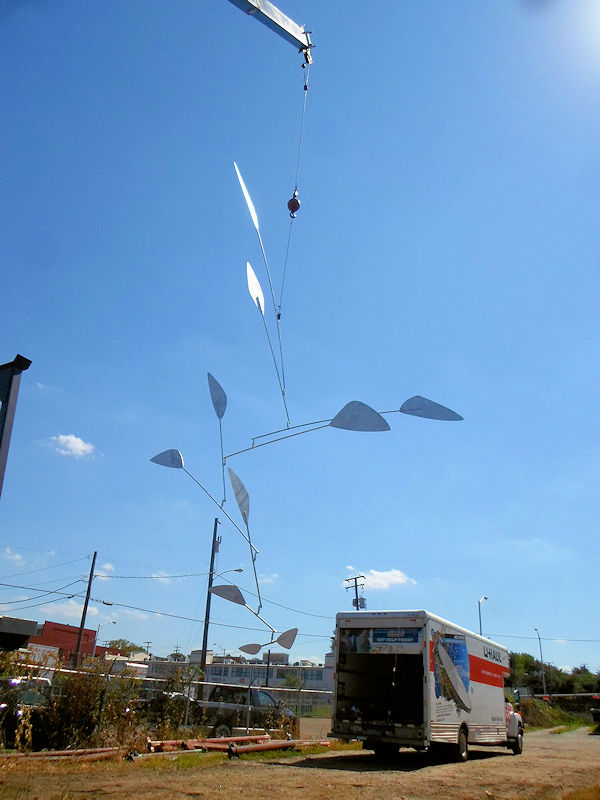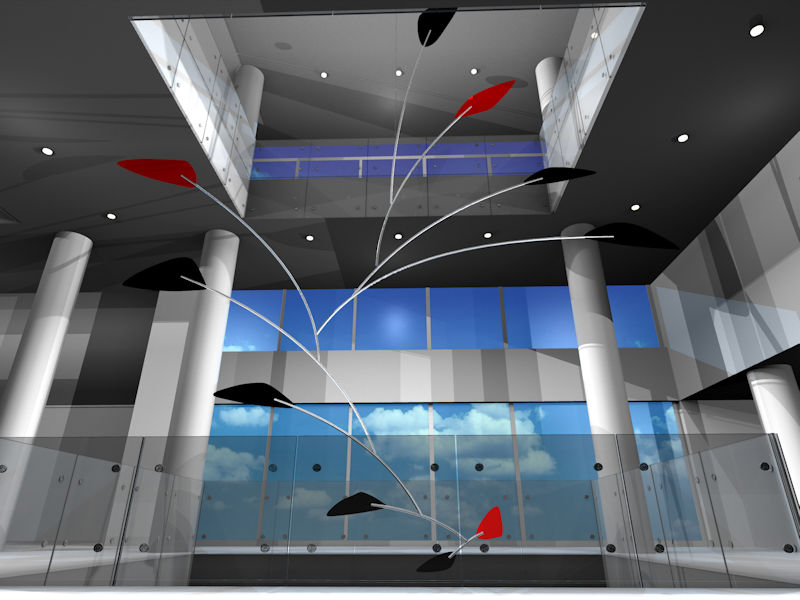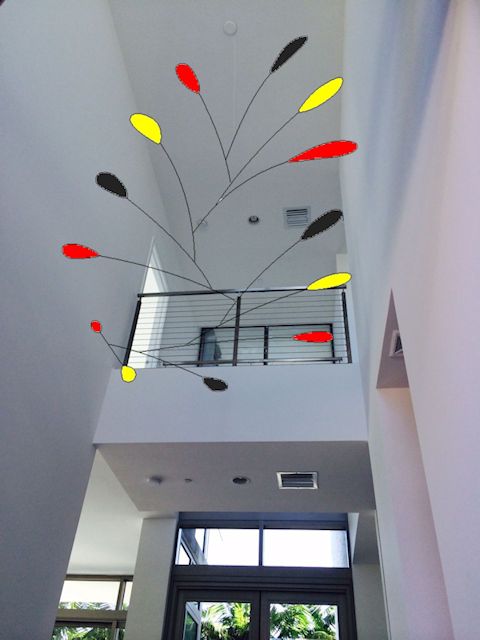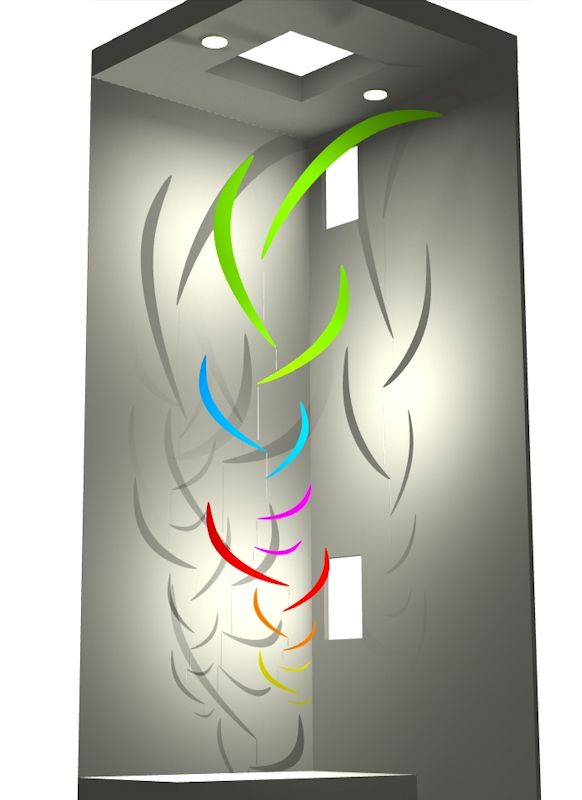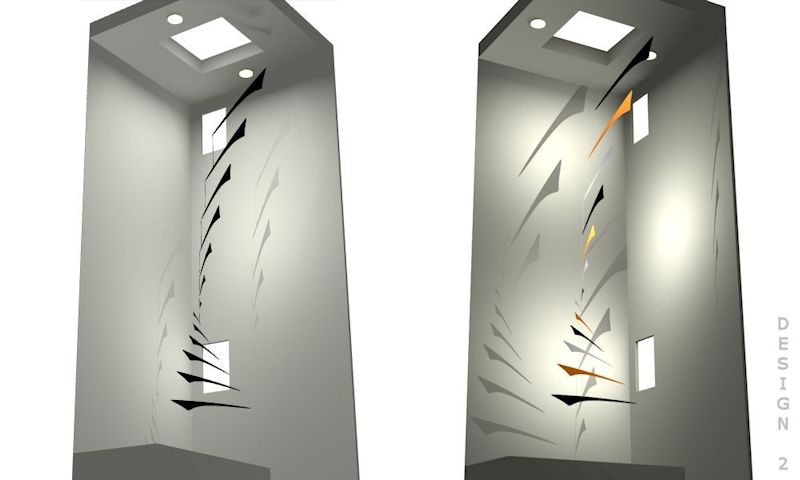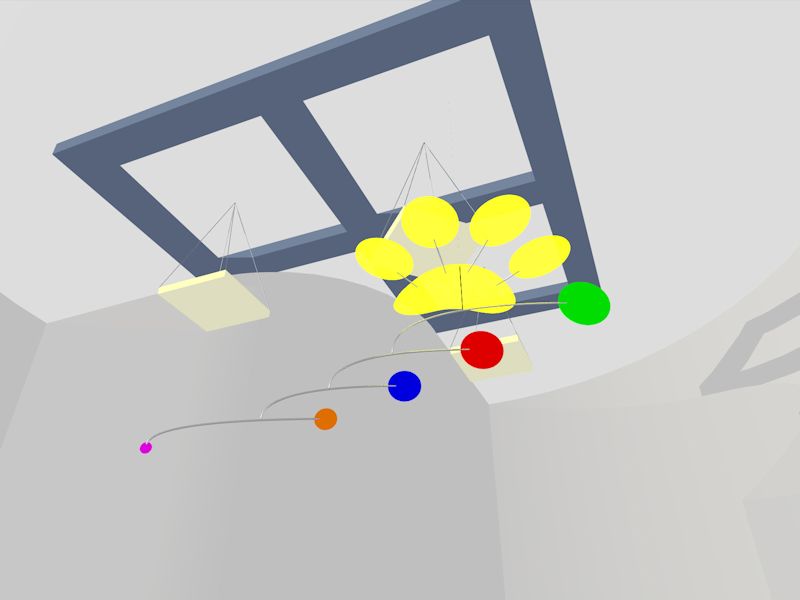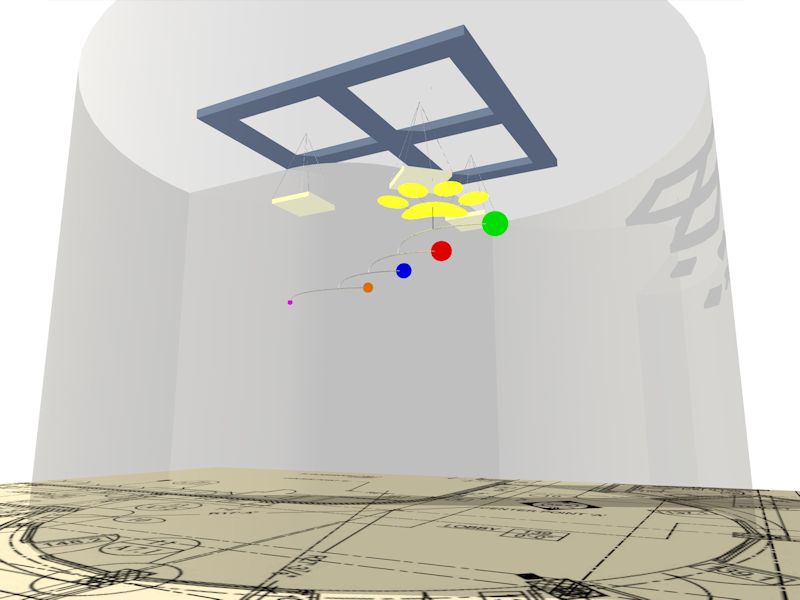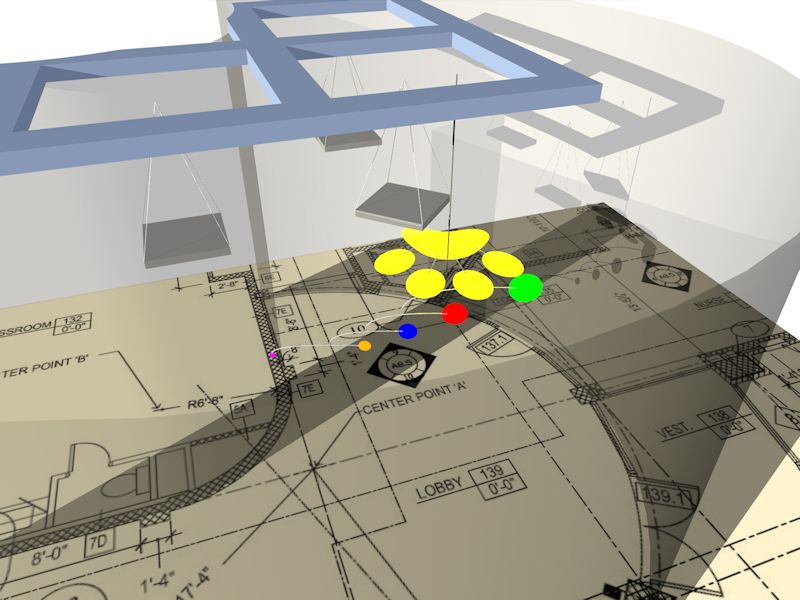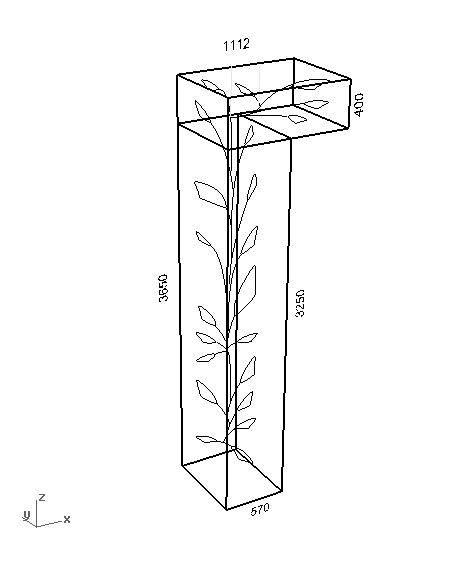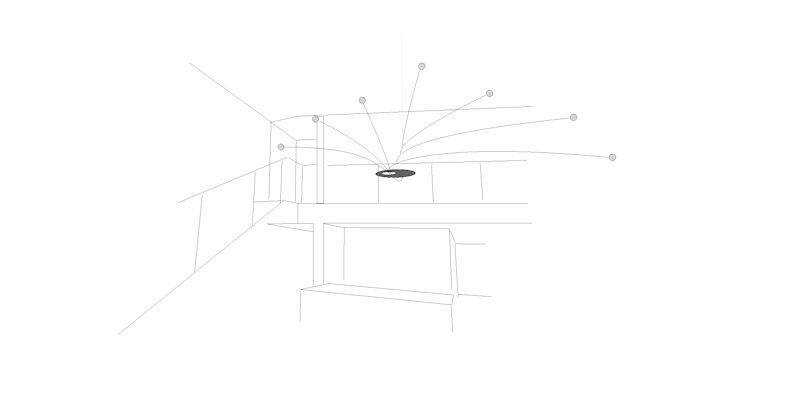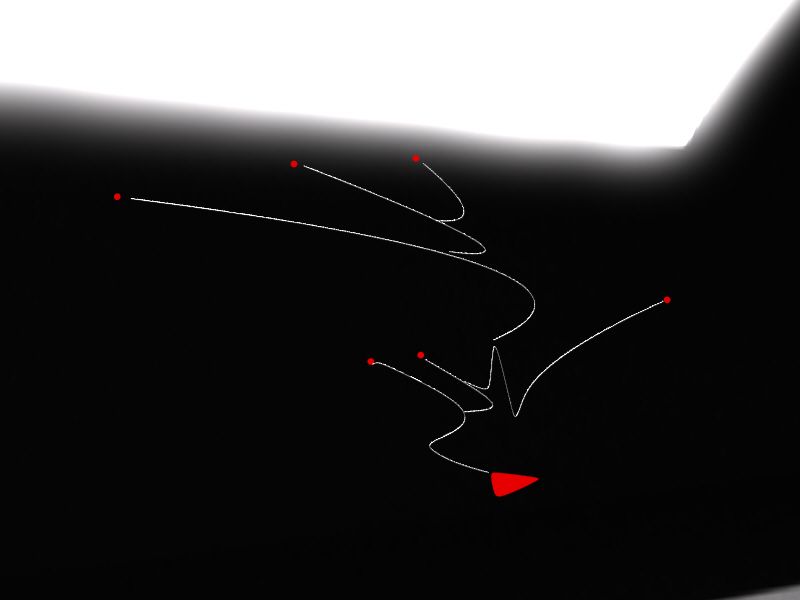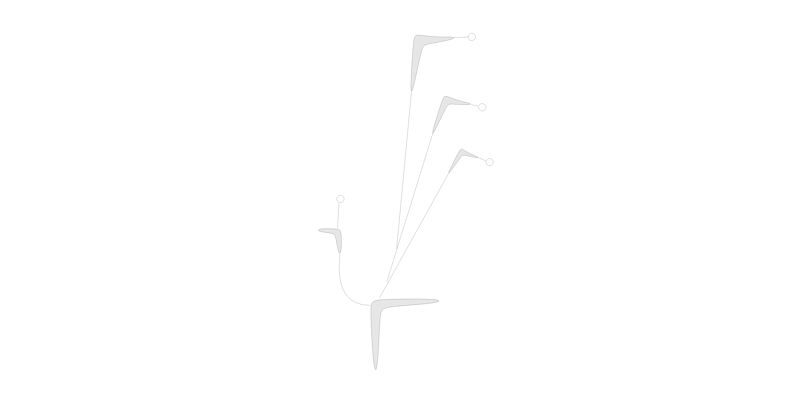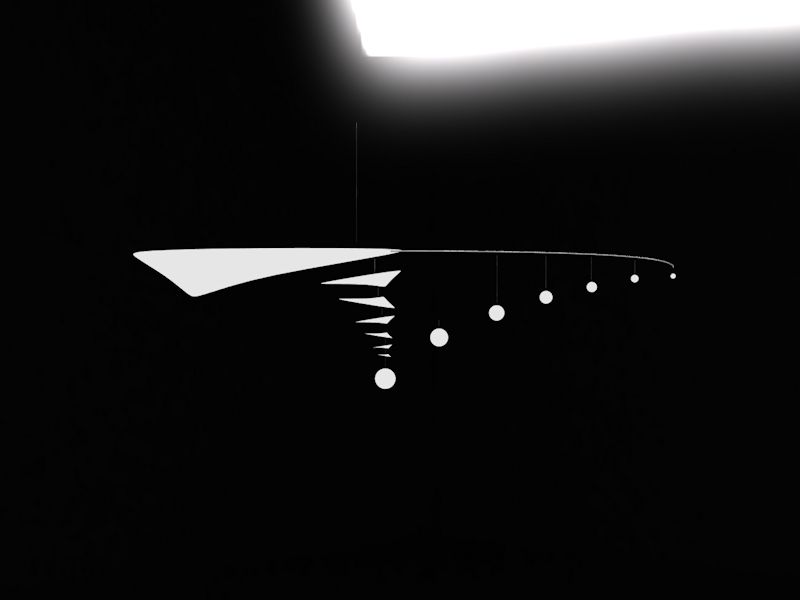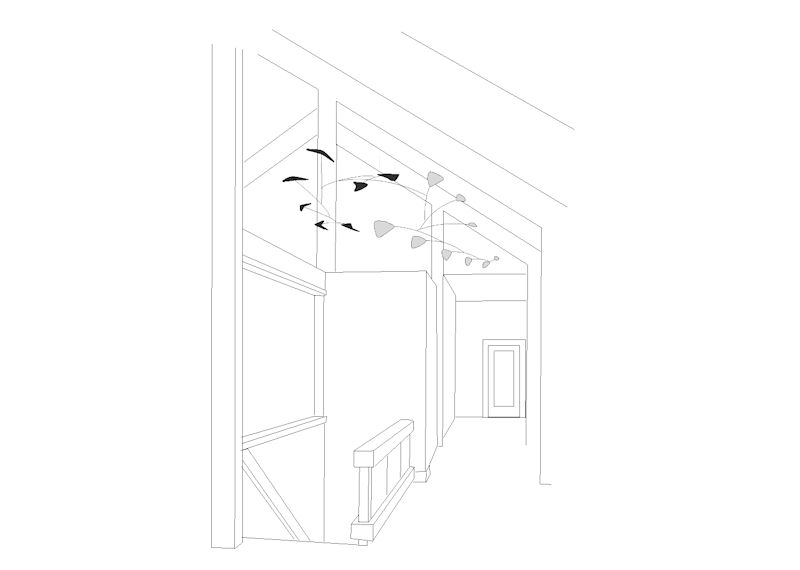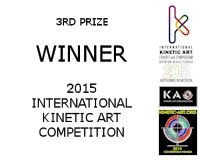5th Prize for 3D Printed Mobile at Swiss 3D Printing Competition
As part of the 20th Triennial Grenchen 2015 Art Limited – Multiple Art, the
Kunstgesellschaft Grenchen in collaboration with PrintaBit organized a 3d printing competition, in which the 3d printed mobile I submitted won 5th prize:

From the jury:
“This work highlights the formal possibilities of 3D printing, as the way the joints are combined within
one form is possible only in that new media technique; and despite the hard-edge material, the
movement and lightness of color, with the play of shadow on the wall, creates a sense of dynamic
lightness.”
The above is a render.
Announcements are at 3Druck and PPS.
1st Prize went to Markéta Schiffnederová for her 3d printed sculpture Crumpled Rabbit:
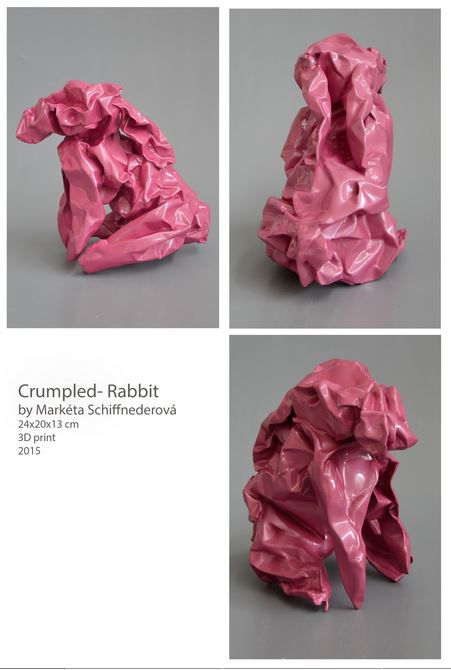
From the jury:
“As a 3-dimensional form, this work is visually interesting from all angles; its subject – an organic
creature – visually has the throw-away quality of crumpled paper, yet the synthetic colour and actual
texture are contradictions to the known sight and touch of both rabbit and paper; and because it
successfully embraces the nature of the medium of 3D printing.”
2nd Prize went to Marc Reist, 3rd to Jean-François Réveillard, and 4th to Oliver Ende.
See more 3d printed art and sculptures, see more of our 3d printed mobiles, or read more of my blog about mobiles.
Photos of a Large Mobile (33ft/10m) Suspended by a Crane for Adjustments
Photos of a large mobile (33ft/10m) suspended by a crane for adjustments, which turned out to be very minimal because the balance points and various alignments were calculated beforehand with engineering software. Most of the connections were precise and did not need any adjustments:

A photo of one of the sheet metal (aluminum) shapes before assembly for size comparison – this one is the top (highest) shape in the mobile:
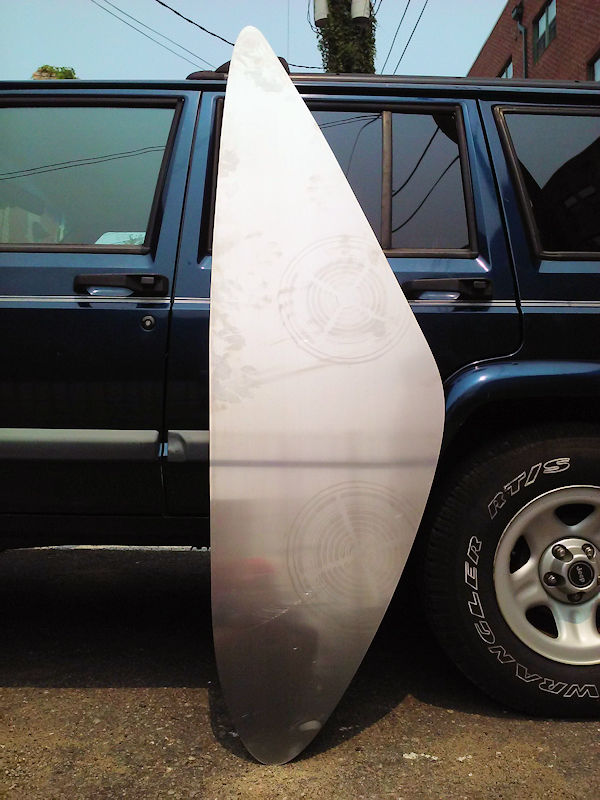
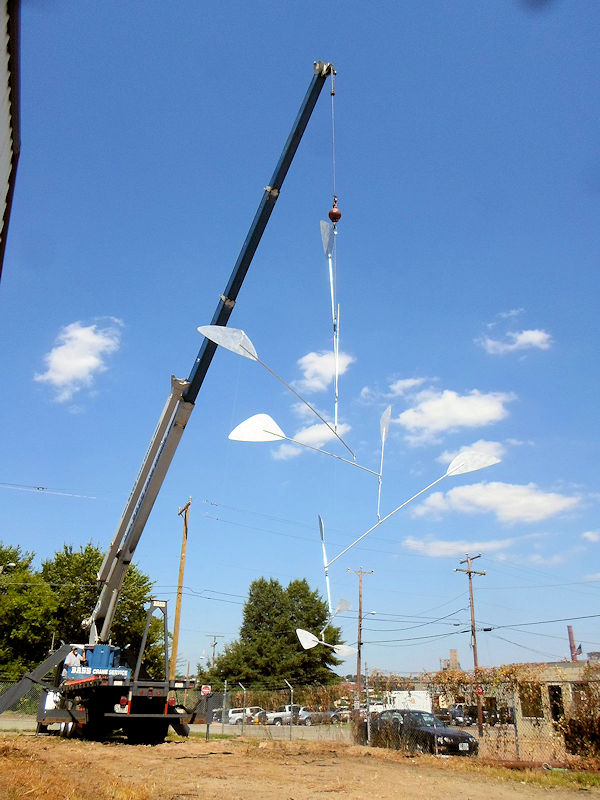
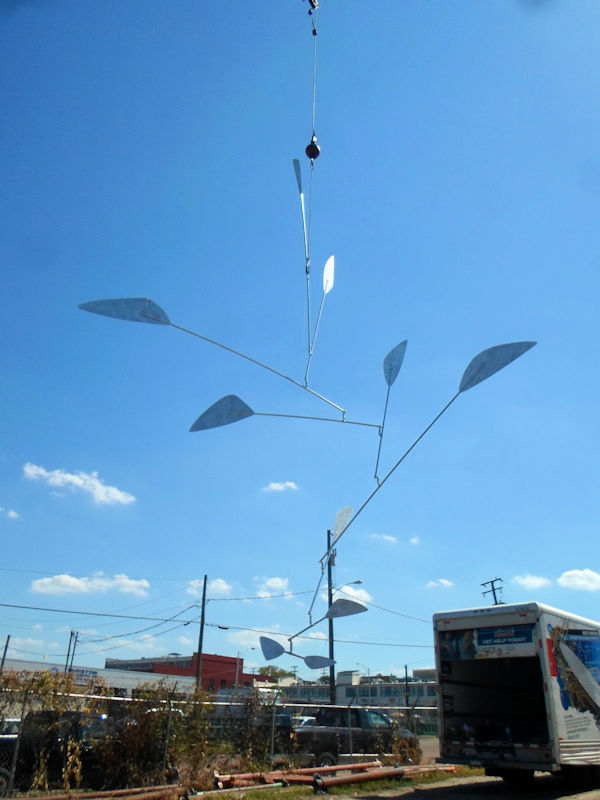
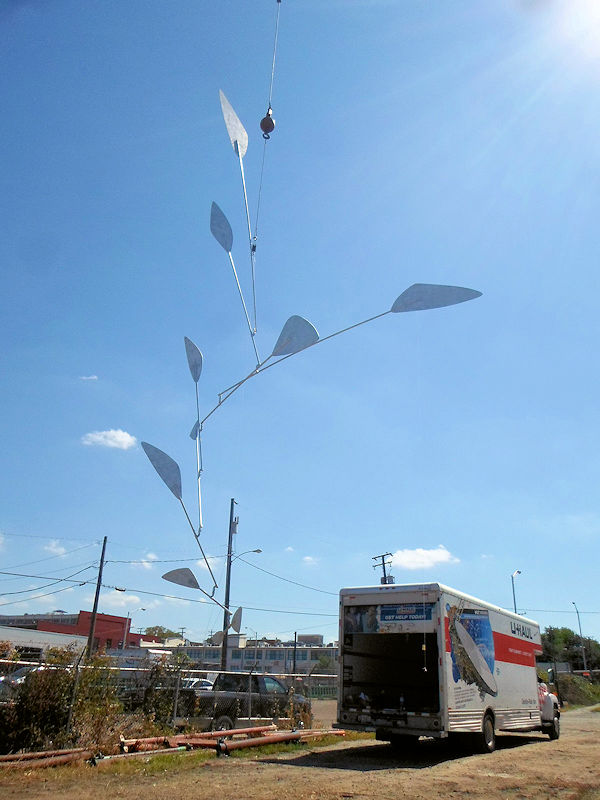
– See the finished mobile installed or see more of my large mobiles –
Proposals / Custom Designs for Large Mobiles for a Three-Story Atrium
Proposals / custom designs for large mobiles for a three-story atrium:
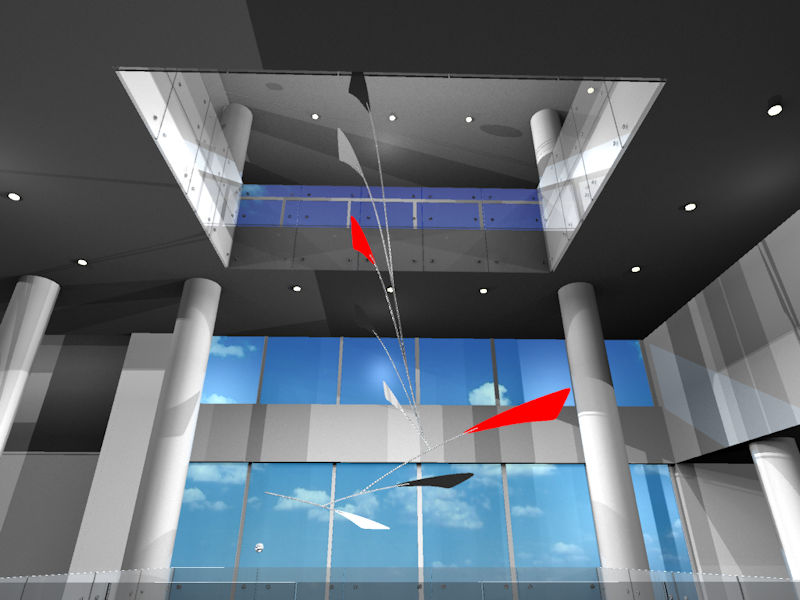
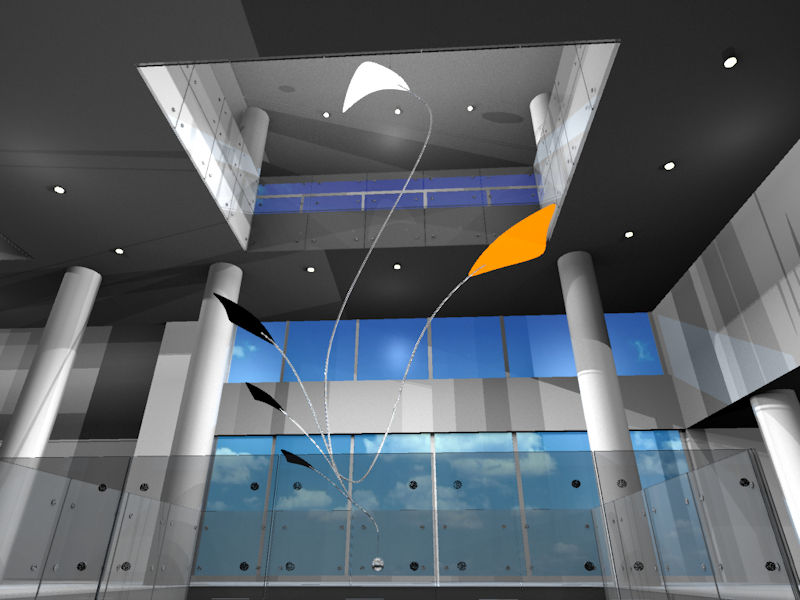

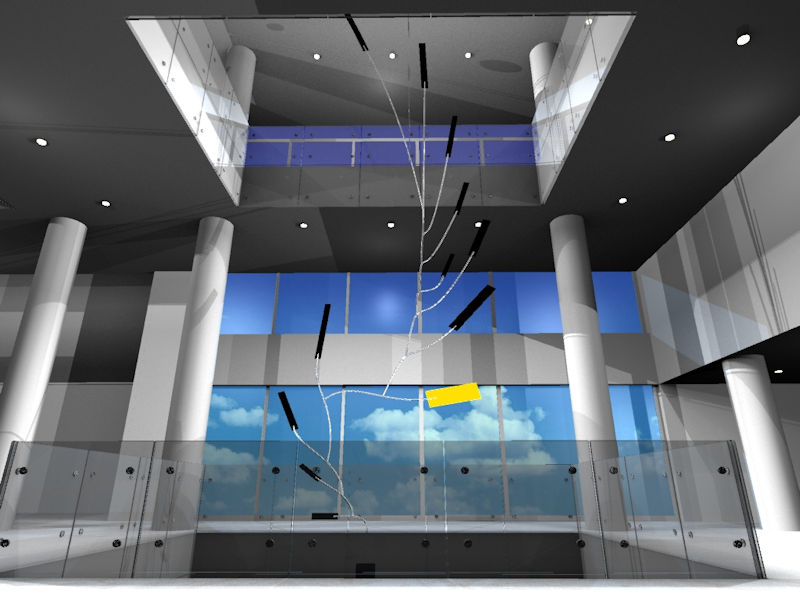
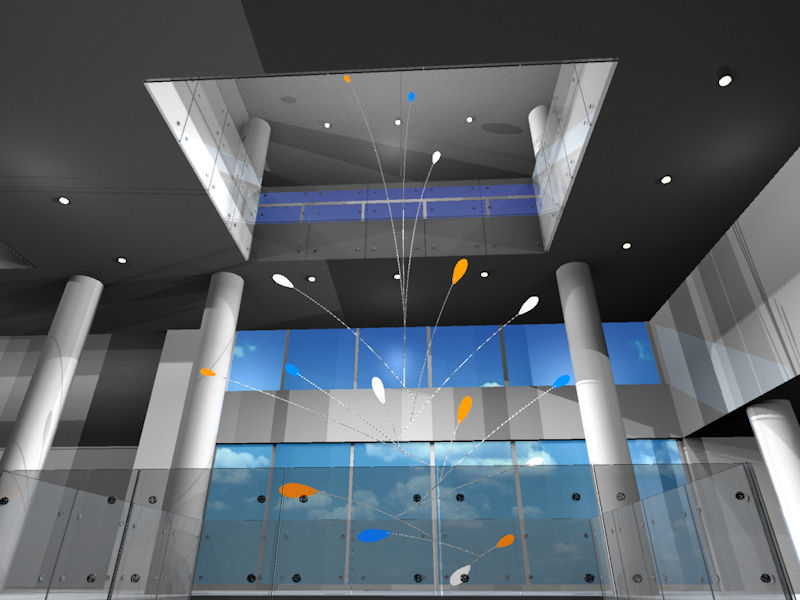
– See more of my custom mobile designs or read more of my blog about mobiles –
Busy, Busy, Busy – Some of the Custom Mobiles I’m Currently Working On
I’m sorry about the lack of blog posts lately, I’ve been very busy. Just for now, here are some of the custom mobiles I’m currently working on:
A custom mobile for a foyer at a private residence in Miami, Florida. A draft of the mobile photoshopped into the two level space:
A three story custom mobile for a light well at a private residence in Chicago:
An additional design for the same space:
A custom mobile for the Titus Elementary School in Warrington, PA:
A custom mobile for a staircase at a private residence in Hong Kong:
A proposal for a private residence in Miami Beach:
Some (not yet made) ideas / mobile designs:
A render of a Calder-style mobile:
And sometimes all kinds of things break loose:
I’m also working on an additional new large scale project that I’m very excited about and will be posting about soon.
– See more of my custom mobiles or read more of my blog about mobiles –
Q&A about Mobiles
A few days ago I received an email from a middle school student who is working on a project for his math class about mobile art. His assignment was to research Alexander Calder or choose a different mobile artist to report on. He came across my website and sent me an email asking if he could send me some questions, which I was more than happy to answer. I just thought I’d post the questions and answers on my blog here as well (which also gives me the opportunity to post some images I’ve come up with but haven’t found a place for anywhere else on my website):
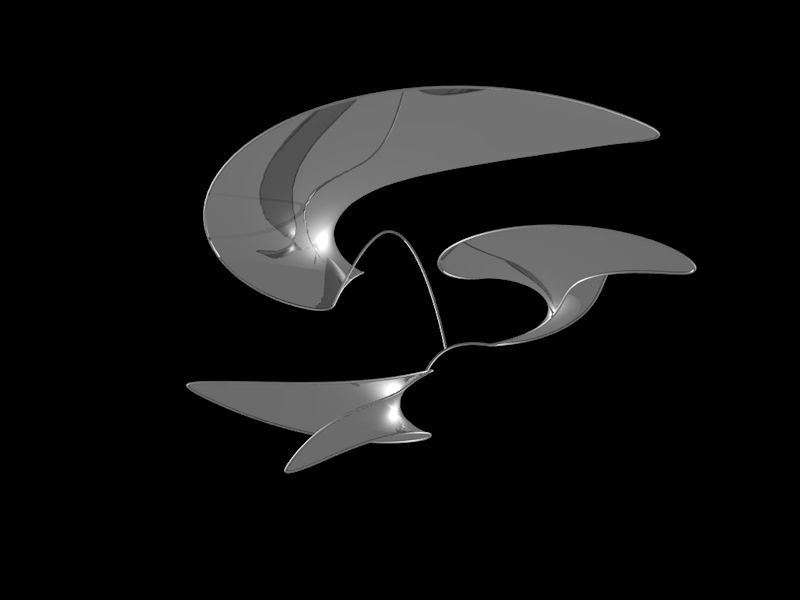
Q: Well my first question for you is why do you think my math teacher wanted us to create a mobile and research a mobile artist?
A: My best guess would be because mobiles are fun to make, beautiful to look at, and are a great way to illustrate how math can be applied to real things. They also allow for easy experimenting.

Q: Alexander Calder received a degree in mechanical engineering and told people that he was good at math. Do you have a math/science/computer background that helps when you develop your mobile art?
A: I got into applying math to computer animations when I was in middle school. My friend and I used the programming language Pascal. That was in the late 1980s so it was the early days of computer animation. I’m thinking if I stayed with it, I might be working at a film animation company now. In school, I also liked math and physics very much. With what I do now, those experiences probably gave me the ability to quickly determine if the balance structure of a mobile will work or not. Some of the 3d printed mobiles I designed a couple of years ago (in a collaboration with mathematician Henry Segerman) were created by writing scripts in the programming language Python. It was very easy for me to adapt to it because of my earlier experiences with Pascal. I’m also using engineering software more and more often, mostly a program called Rhinoceros, which I think will lead to being able to design rather complex mobiles eventually. And from time to time I’m working on animating 3d models of mobiles based on gravity, air currents and friction. When it comes to developing new designs, what I think matters the most is the ability to think about it in new ways and not just follow the same old patterns.
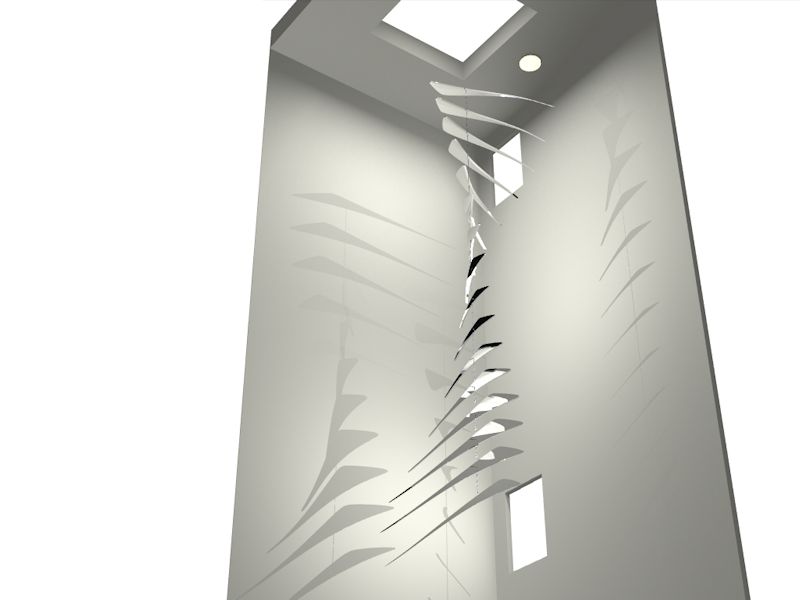
Q: You did lots of interesting things before you became a mobile artist. Do you think those other jobs helped make you a better artist?
A: I think they helped me to see myself as more than an artist. I see myself just as much as someone who runs a custom fabrication business, which involves all the standard parts of running a business (marketing, drawing up proposals, communicating with clients, inventory, shipping, etc). It’s not just about coming up with mobile designs that are fascinating to me. It’s also very important that the client will be very happy with the end result.

Q: Tell me about a favorite piece of work you created and why it’s one of your favorites.
A: I very much like working on large mobiles. Because of their size, they just have such an amazing visual impact. In general, there are several of my mobiles that I like very much because I think they’re rather original in design:

I also very much liked working on the aforementioned collection of 3d printed mobiles. There was the excitement of experimenting in uncharted territory. To my knowledge, no one else has made fully 3d printed mobiles yet. It also allows for mobile designs that would be difficult to make by hand. When my work schedule allows it, I want to explore it further and see what other new designs are made possible by combining mobiles with 3d printing.
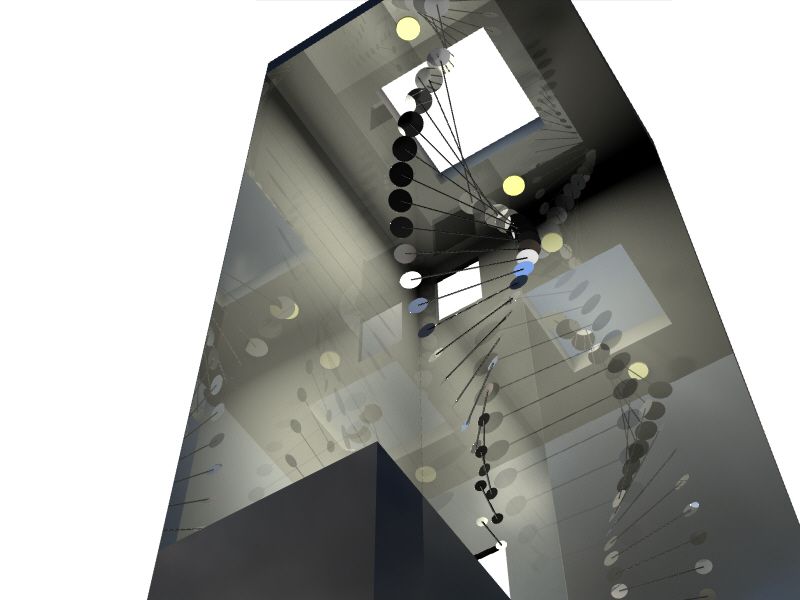
Q: Where do you get your ideas for individual pieces of art?
A: Sometimes I look at the space where the mobile will be installed. I look at the shapes and dynamics of the architecture, or the interior decorating style. Ideas usually emerge from that. Some clients who order custom made mobiles have specific ideas for the design, so I just fill in the parts where the client might be feel unsure about a certain design or technical aspect.
Thanks for the great questions, Aidan!
More interviews:
Behind The Virtual Storefront
Meet The Makers
The Edge
FAMO (in Italian)

